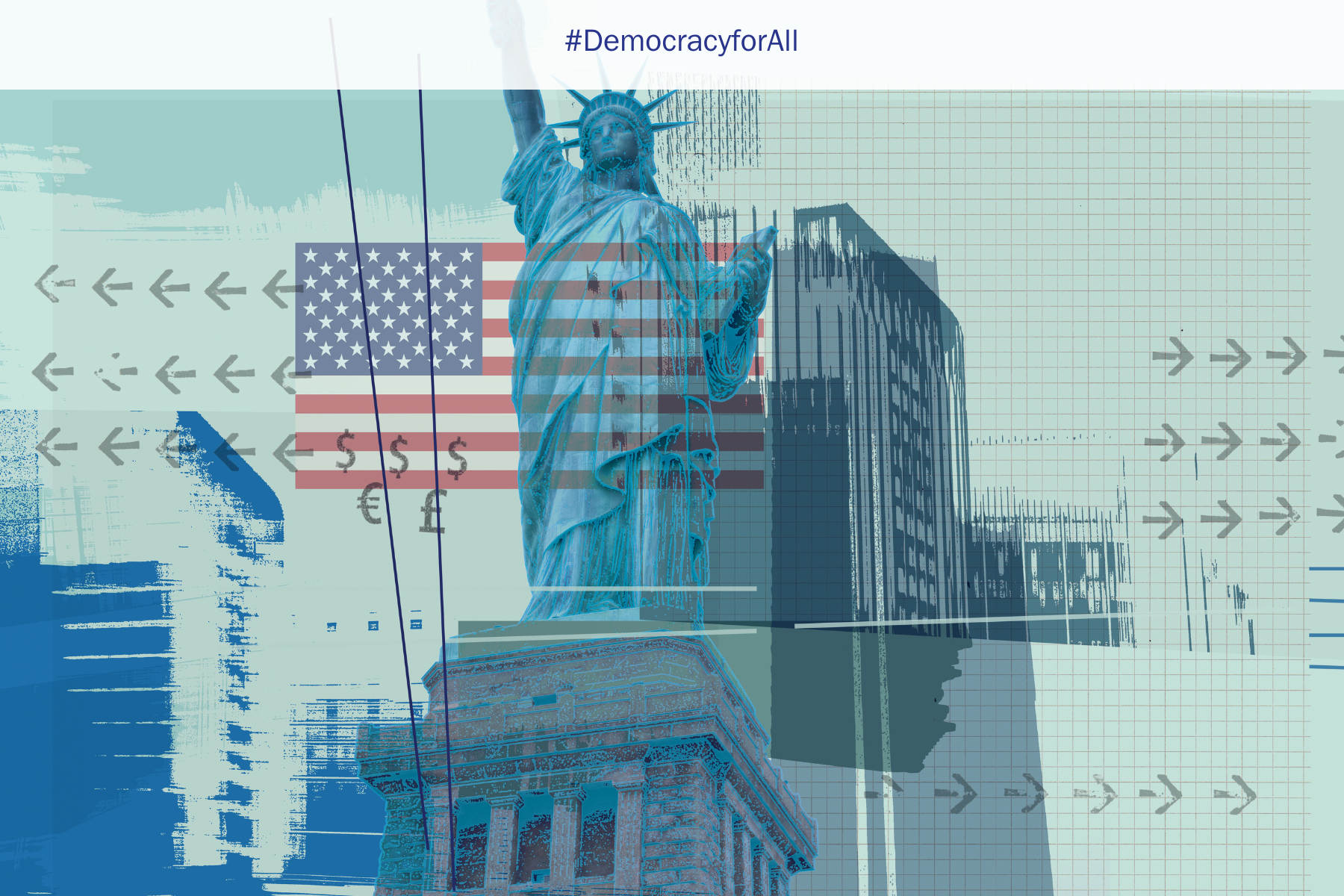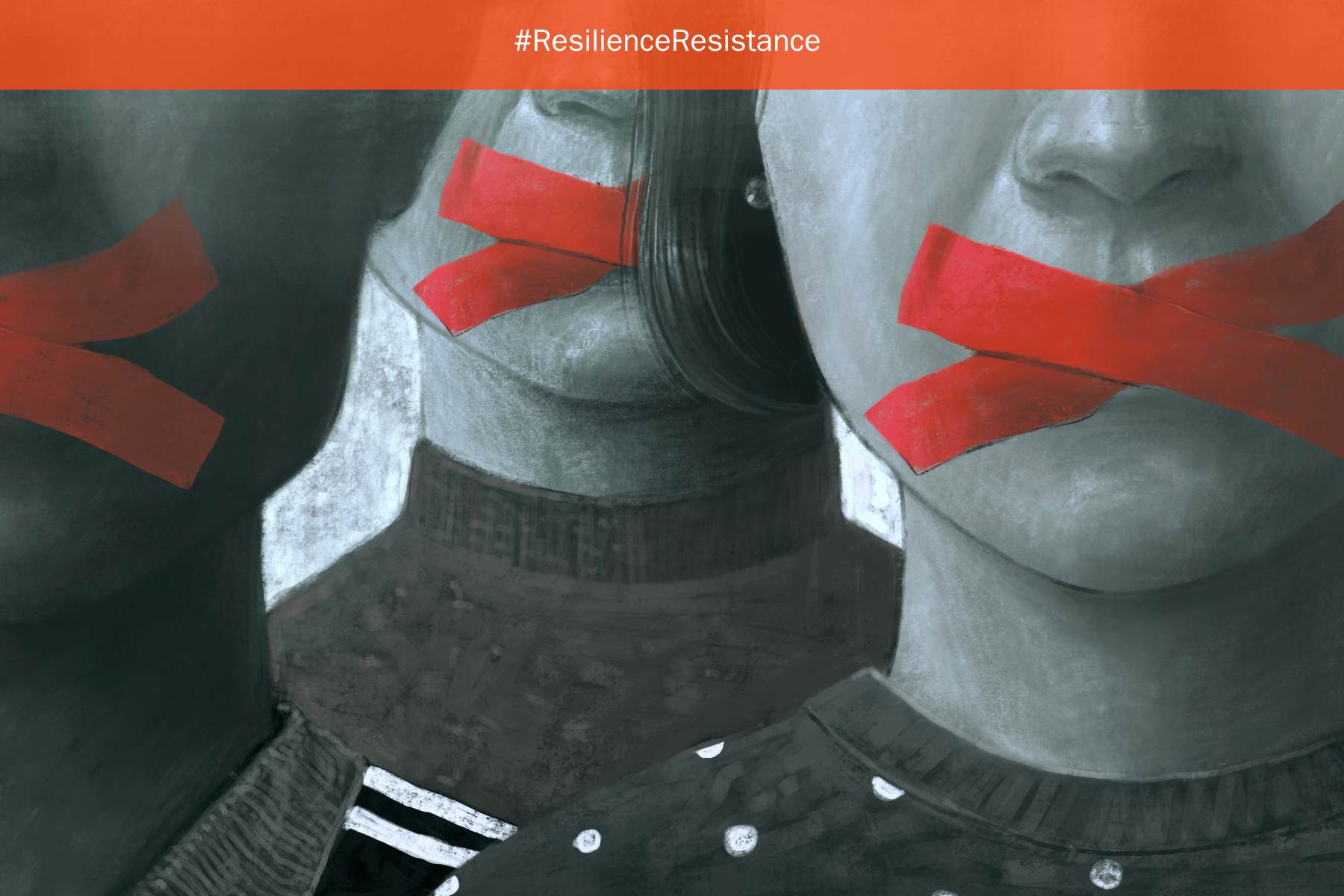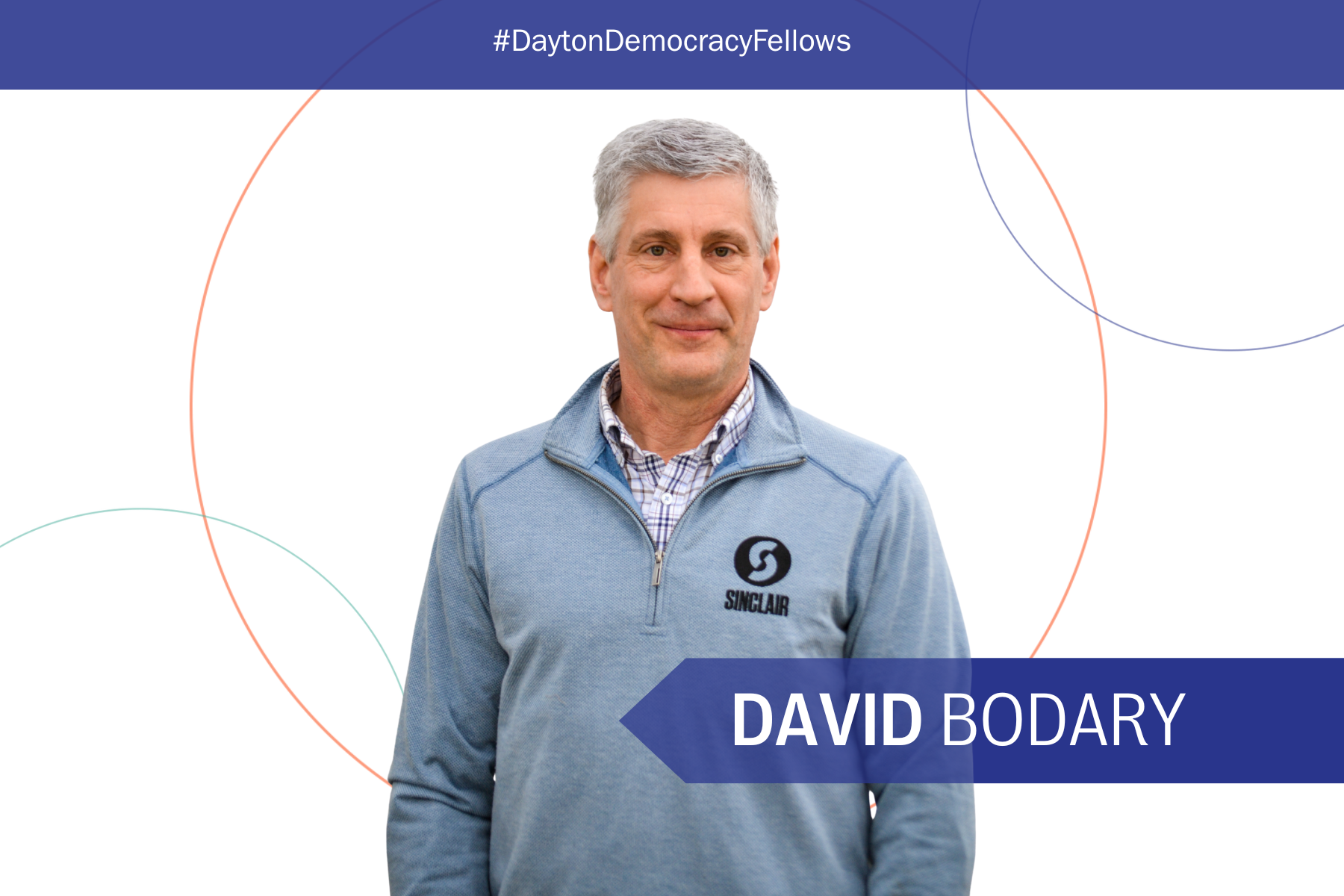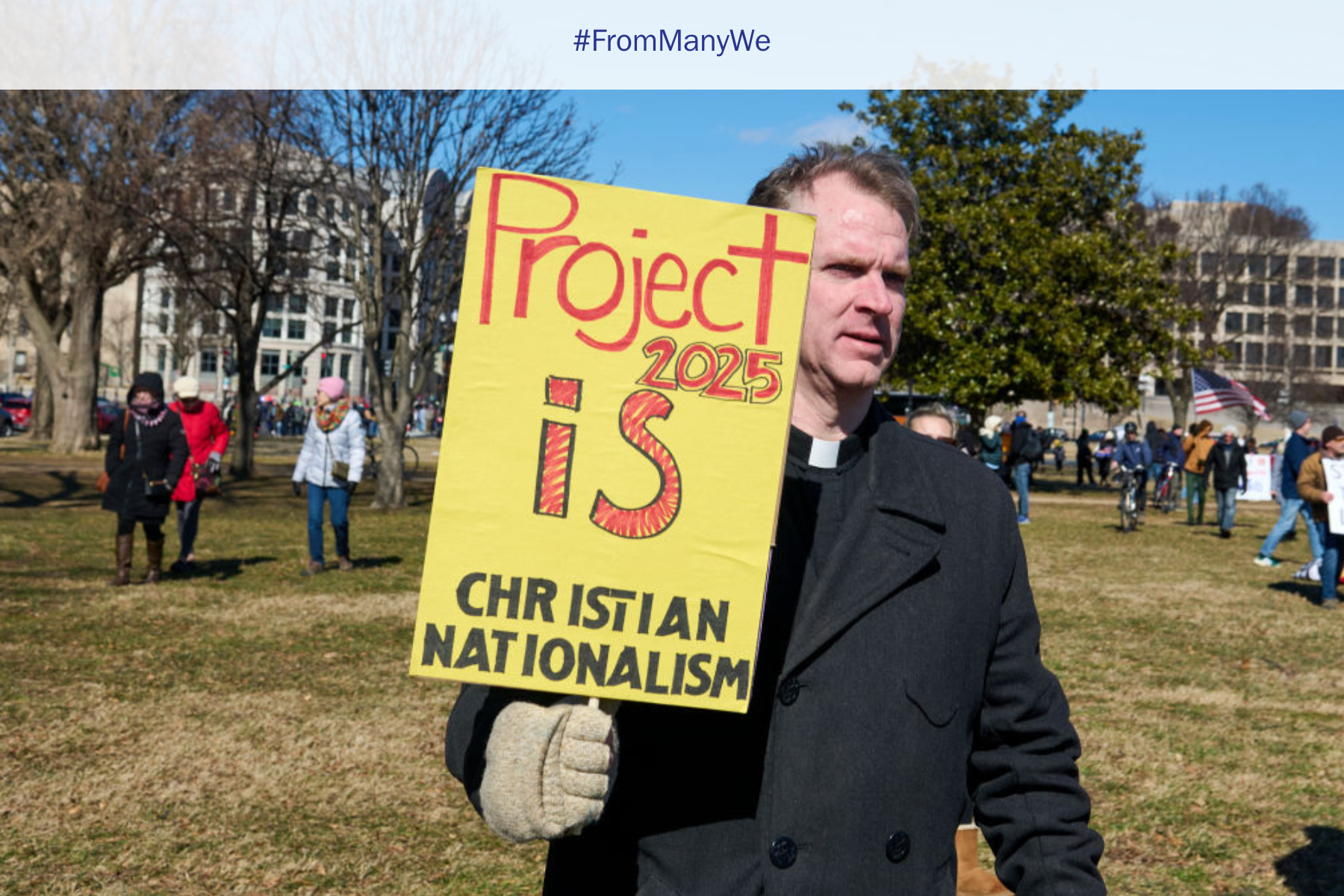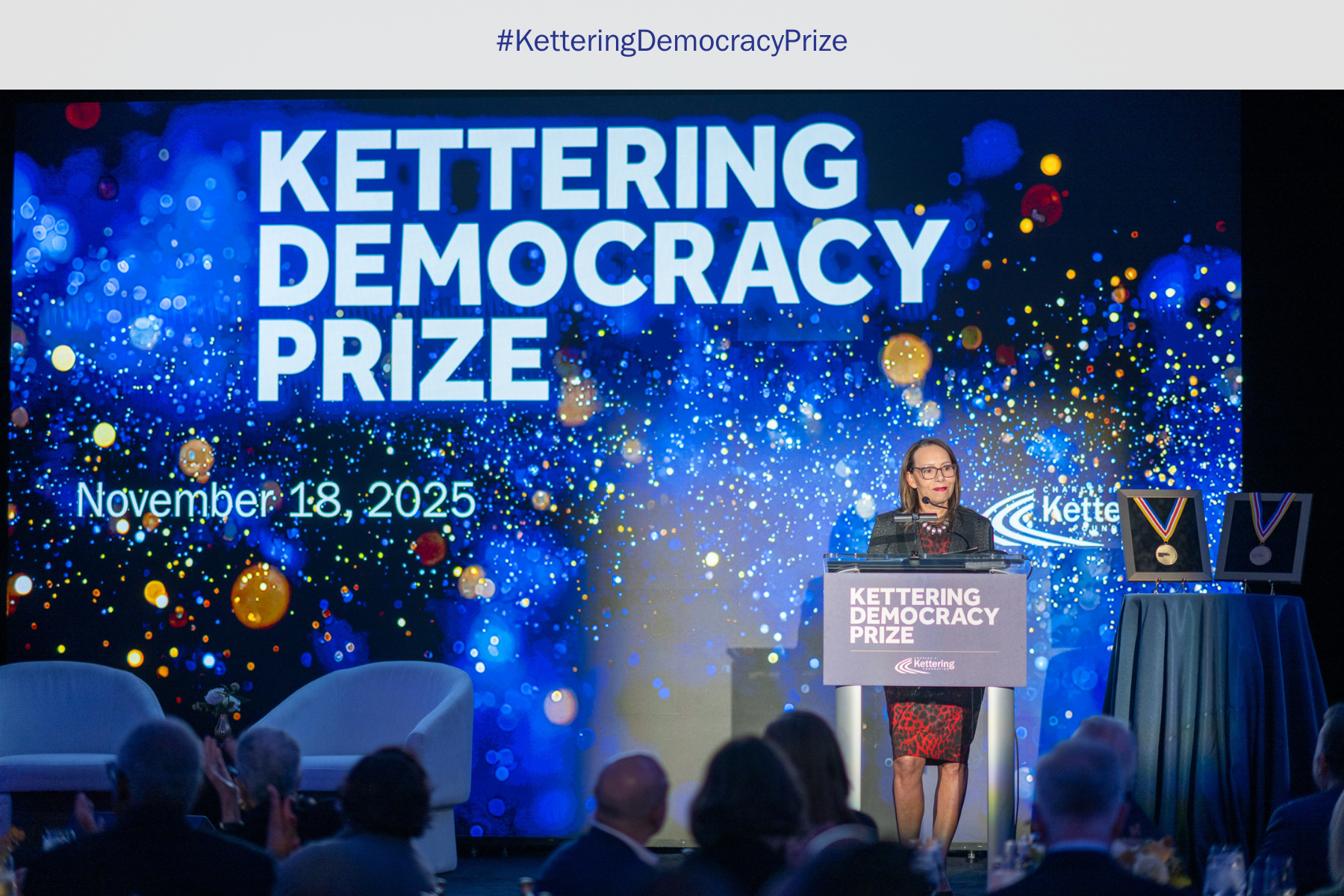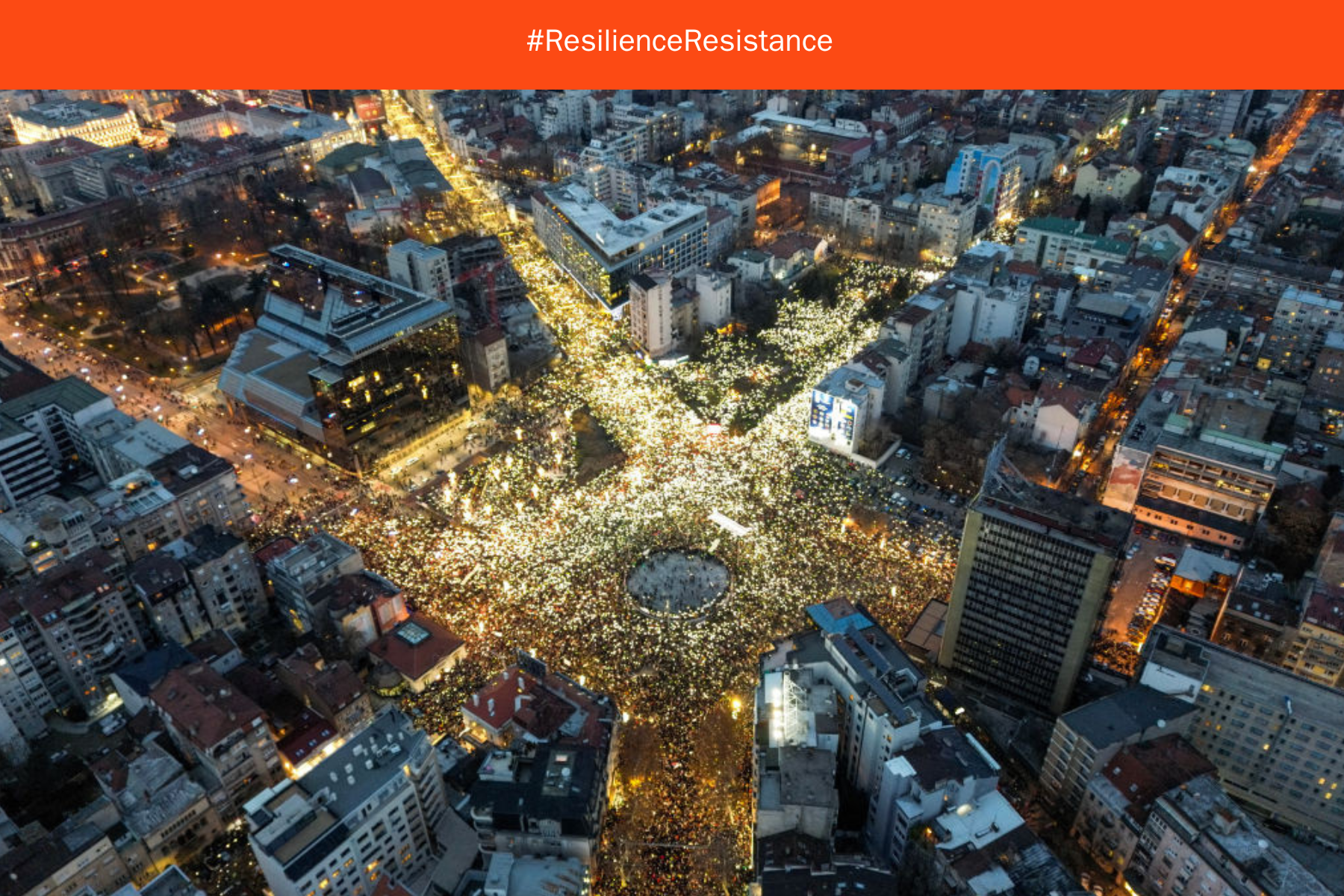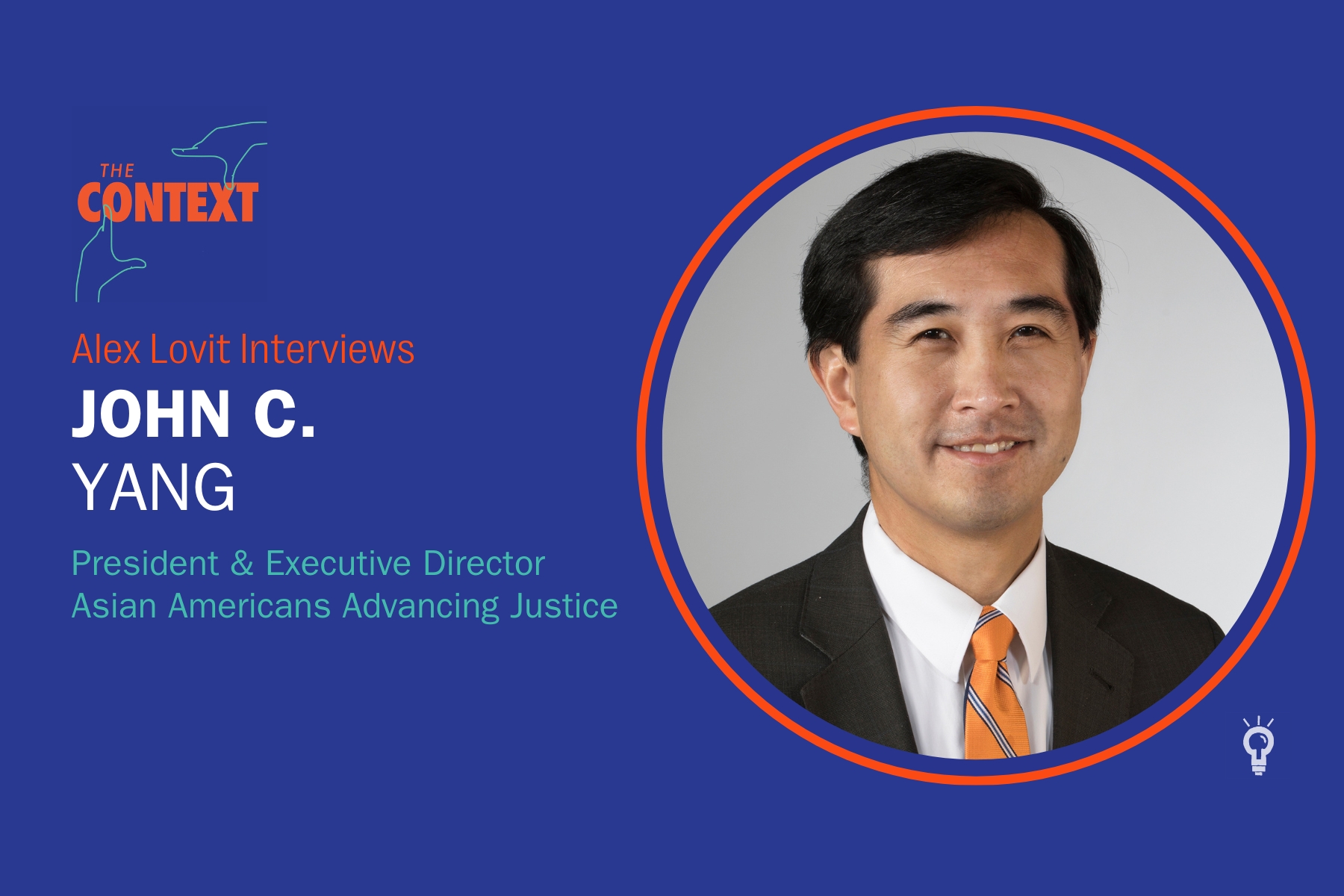I Came to DC for Work. I Left Remembering What We’re Fighting For.

Sometimes attacks on inclusive democracy are subtle. And sometimes they are in your face.
I was recently in Washington DC, staying near Black Lives Matter Plaza, a portion of 16th Street about a quarter of a mile from the White House. I had, of course, heard in the news that the city would be removing the bold, uppercase letters painted on the street because of pressure from Congressional Republicans who have threatened budget cuts for the city.
I thought perhaps by now I would be desensitized to the administration’s repeated attacks on efforts to celebrate our nation’s diversity. Boy was I wrong.
I wasn’t prepared for the level of destruction that the project of removal entails. The street is being completely demolished. A full construction crew wielding jack hammers and other equipment is removing brick and layers of road, taking it down to nothing. And now that the project is complete, there is absolutely no sign that there ever was a space committed to remembering the protests—as well as the reckoning those protests brought about—that swept the country in 2020.
Removing this monument is wrong, no matter how it would be done, but the fashion employed seems to be approached with the intent to cause deep pain and to sweep away any chance that anyone would know that there ever was a Black Lives Matter Plaza.
People who live and work in DC were likely already aware of what was actually happening. But this is no longer a top news story, as daily we experience a barrage of changes being initiated by the new administration. So imagine this Midwesterner’s shock and surprise.
Throughout American history, and even very recently, we’ve experienced vandalism and removal of monuments, as well as the omission of key figures in our history, in an attempt to further marginalize certain populations. In 2017, Lexington’s rainbow crosswalk was removed because it was a “safety hazard.” In 2020, Central Park unveiled its first sculpture depicting nonfictional female figures—Susan B. Anthony, Sojourner Truth, and Elizabeth Cady Stanton—a full 100 years after their fight for the right to vote for women. In 2021, the Emmett Till Memorial in Mississippi was replaced with a 500-pound, bullet-proof sign, because it had been vandalized so many times. Monuments are a way of celebrating groups that have demanded and won inclusion, and removing them because of backlash and repression is a huge step backward.
My first afternoon in the city I went for a walk. It was a warm, sunny spring day, and I was grateful to have a bit of time between meetings for some exercise. Ordinarily I feel inspired when in DC—proud to be an American, full of patriotism, and made re-aware of the promise of democracy.
But on this day, I didn’t experience that usual joy. I stood and watched the construction crew, noticing other pedestrians going about their business as if nothing unusual were happening. At one point, I realized that some of the crew members were watching me watching them. I wondered if they were as affected as I was, or if this was just another day on the job.
The next morning, I passed by Black Lives Matter Plaza again, on my way to meet a colleague for breakfast.
This time, though, many people were stopping, taking photos, and watching the demolition. I paused in the middle of the street, looking south toward the White House. And I chatted with a man doing the same. As we stood side-by-side in the crosswalk, he spoke to me. “It’s appalling,” he said. “I’m in DC for meetings, and even my conservative colleagues said that this is going too far.” This is not what everyday Americans wanted.
That first afternoon, I was brought down by how disinterested others seemed. But this brief encounter—with a man I will likely never see again—filled me with hope. If we can recognize our common humanity, that collectively what we all want is just a good life, then isn’t that a step in the right direction?
They may be able to take away this symbol. But they can’t take away our hope, and they can’t take away our collective power.
Melinda Gilmore is the director of communications at the Kettering Foundation.
From Many, We is a Charles F. Kettering Foundation blog series that highlights the insights of thought leaders dedicated to the idea of inclusive democracy. Queries may be directed to fmw@kettering.org.
The views and opinions expressed by contributors to our digital communications are made independent of their affiliation with the Charles F. Kettering Foundation and without the foundation’s warranty of accuracy, authenticity, or completeness. Such statements do not reflect the views and opinions of the foundation which hereby disclaims liability to any party for direct, indirect, implied, punitive, special, incidental, or other consequential damages that may arise in connection with statements made by a contributor during their association with the foundation or independently.
